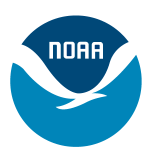- Industry: Government
- Number of terms: 30456
- Number of blossaries: 0
- Company Profile:
NOAA Coral Reef Conservation Program, National Oceanic and Atmospheric Administration, U.S. Department of Commerce
In response to the dramatic increase of coral diseases observed over recent years, the U.S. Coral Reef task force (2002) recommended the creation of the CDHC from a cross-section of internationally recognised experts in coral diseases, biomedical and veterinary sciences, pathology, chemistry, biology, biotechnology, and marine management. It organises and coordinates the scientific resources of the U.S. and its territories to meet the challenge of globally declining coral reefs.
Industry:Natural environment
In situ NOAA meteorological and oceanographic monitoring sites that collect data continuously which are transmitted hourly via satellite to a data archival site. An automated system (hardware and software) that monitors select oceanographic and meteorological parameters and produces specialised alerts when conditions may result in environmental stresses conducive of coral bleaching. NOAA plans to expand the CREWS from the Florida Keys/Bahamian sites to many remote coral reef sites throughout the world.
Industry:Natural environment
In statistics, a method for comparing treatment group means after The analysis of variance (ANOVA) null hypothesis that the expected means of all treatment groups under study are equal, has been rejected using the ANOVA F-test. If the F-test fails to reject the null hypothesis this procedure should not be used.
Industry:Natural environment
In statistics, a sample allocation method that may be used with stratified samples to provide the most precision, given a fixed sample size .
Industry:Natural environment
In taxonomy, an authoritative document containing a system of rules and recommendations to be followed in giving a scientific name to an animal or animal group. It has been adopted by the International Congresses of Zoology (more recently the International Union of Biological Sciences) and is administered by the International Commission on Zoological Nomenclature. The most recent version of the Code is the Fourth Edition published in September 1999 and took effect on January 1, 2000; usually referred to as the "Code" .
Industry:Natural environment
In taxonomy, the International Code of Zoological Nomenclature. An authoritative document containing a system of rules and recommendations to be followed in giving a scientific name to an animal or animal group.
Industry:Natural environment
In taxonomy,the identical spelling of a new genus-group name and a pre-Linnaean (i.e., before 1758) one-word name cited as a synonym of only one of the species or subspecies originally included in that genus.
Industry:Natural environment
In the geologic time scale, a unit of time less than an era and greater than an epoch.
Industry:Natural environment
Large pulses of warm and salty water of Indian Ocean origin which enter the Atlantic Ocean directly south of the Cape of Good Hope in the form of anticyclonic eddies. The process of ring detachment is associated with perturbations of the Agulhas Current that retroflects south of Africa.
Industry:Natural environment
Large quantities of dust, originating in the Sahara desert of Africa, are blown across the Atlantic Ocean each summer, and may be a contributing factor for the declining health of Caribbean coral reefs. The dust may modify clouds and rainfall both in Africa and across the tropical North Atlantic as far away as Barbados. Other studies suggest that the dust may play a role in determining the frequency and intensity of hurricanes formed in the eastern Atlantic Ocean.
Industry:Natural environment
